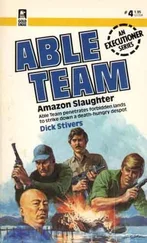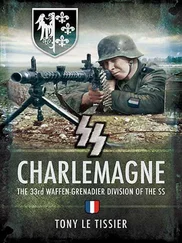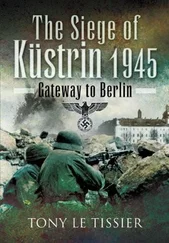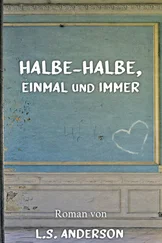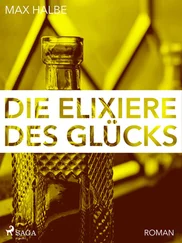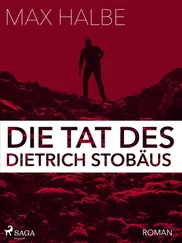By 1900 hours several tanks had arrived to join von Luck ’s battlegroup, including some small, fast Hetzer tank-hunters. Ammunition was loaded and fuel shared out, but as no supply trucks were to accompany them, their capacity for fighting and movement was limited to what they were now carrying. These preparations could not go unnoticed and by nightfall some hundreds of women and children with their primitive carts and baggage had gathered round, and von Luck did not have the heart to turn them away.
They set off at 2000 hours, their first objective being Baruth, the important traffic junction astride the swampy bottom of the Nuthe glacial valley. When they reached the Berlin–Dresden autobahn, they found individual Soviet supply trucks on it, heading for the capital, so road blocks were established north and south of the crossing point.
There were then (no longer) two bridges across the autobahn south of the Teupitz–Halbe exit, the southernmost of which had been blown. From there one of the original tracks connecting the villages before the forestry grids were imposed led in a shallow S to Baruth. von Luck ’s force made good progress, despite having to traverse these woodland tracks and fire breaks in the dark. Whenever the tanks stopped the civilians would close up behind and wait for the next move.
In order to reach the Juterbog road, von Luck would have to seize, pass through and hold Baruth, as the valley bottom that the town straddles is otherwise virtually impassable to tanks because of the network of irrigation ditches running through the water meadows.
They reached the outskirts of Baruth at about midnight but, as they emerged cautiously from the woods, they suddenly came under heavy anti-tank and machine-gun fire. Clearly the Soviets had anticipated a break-out attempt at this point. The defences here included some Josef Stalin heavy tanks which had been dug in so that only their turrets were exposed. The Stalin tank was superior in armour to anything the Germans had, its only known weakness being the time it took to reload its formidable 122mm gun. These tanks effectively blocked the line of advance, so Colonel von Luck decided to wheel his battlegroup round to the right and then send in his Panzergrenadiers to take the town from the north, this appearing to be the easiest break-out route, providing he did not get involved in lengthy fighting that would give the Soviets time to reinforce their positions.
Just then some Panthers of Battlegroup Pipkorn appeared from the east. The southern group’s attack from its positions near Schlepzig in the Upper Spreewald had also begun at about 2000 hours, but proved unsuccessful. When the leading elements reached the defensive positions of 329th Rifle Division, they had encountered heavy fire and come under repeated flank attacks, which gave them a severe mauling and caused the leading elements to scatter. Only a few individual groups actually got as far as the autobahn near Staakow, where the bridge crossed the autobahn south of Halbe, and then pushed on via Dornswalde for Baruth.
Despite these welcome reinforcements for the Germans, the Soviets were able to do better and towards dawn it became clear that, with ammunition and fuel rapidly running out, the German troops would be unable to break through. von Luck therefore radioed General Busse informing him of the hopelessness of the situation, together with his decision to continue the attack while the cover of darkness lasted, but that he feared more counterattacks and air attacks with the coming of daylight. Busse ordered the battlegroup to stay where it was, avoid direct attacks and wait for the remainder of 9th Army to catch up.
Instead von Luck summoned his subordinate unit commanders and told them that he had decided to disband his force and give them the opportunity of breaking out in small groups. He himself would return to the pocket with his adjutant, Captain Liebeskind, a liaison officer and a runner to explain his actions. However, as it turned out, Pipkorn was killed during this action and von Luck captured early on 27 April on his way back. Some of his men actually reached the Elbe, but most were either killed or captured. [17] Koniev, Year of Victory , p. 168; Lakowski/Stich, Der Kessel von Halbe 1945 , pp. 72–96; von Luck, Gefangener meiner Zeit , pp. 272–6.
From Radeland, the nearest village east of Baruth, schoolboy Erwin Hilldebrands reported:
During the fighting Soviet soldiers hid under the roofs, in the sheds and barns, facing north-east, and many foxholes were dug along the eastern edge of the village. In addition, there were some 122-mm artillery pieces also aimed towards the woods. One gun was destroyed and lay on the roadside for weeks. There were over fifty SS dead lying just inside the woods on the right-hand side of the track leading to Neuendorf.
The crew of an unknown type of tank heading towards Baruth from Dornswalde were shot at the entrance to Radeland by the Soviets, their bodies being put into the mass grave with the others mentioned above, the tank crews in their black uniforms being treated as SS.
The northern part of Baruth was attacked by Soviet aircraft on 25 or 26 April, as we could see clearly from the west side of Radeland. [18] Schulze, Der Kessel Halbe–Baruth–Radeland , pp. 54–5.
One of the last messages from 9th Army reported at 2230 hours:
…continual air attacks over the whole of the army’s area, heavy losses of men and equipment, as well as considerable changes of route… V Corps attacked towards Baruth with the southern group from the Schlepzig area at 2000 hours. Strong enemy attacks at the moment at Teupitz and Märkisch Buchholz. Following defensive action, northern group attacking from Teupitz and Märkisch Buchholz at about 2400 hours. The southern group has had partial success south of Krausnick. Two bridges under construction over the Dahme. First impressions: the enemy is constantly reinforcing. The army is engaged in heavy defensive fighting along the whole front Schwielochsee– Königs Wusterhausen, with main points at Beeskow and north of Neugolm, Storkow, Zernsdorf. [19] Lakowski/Stich, Der Kessel von Halbe 1945 , pp. 91–2 [citing Federal Military Archives RH 19 XV/10, Sheet 334].
Army Group Weichsel commented on these battles:
The enemy has mounted strong attacks supported by tanks and ground-attack aircraft against the encircled 9th Army from the east and north. The virtually total failure of air supply has so weakened this bravely fighting army that the successful execution of its task has become questionable should re-supply tonight fail. V Corps has connected with the right-hand attacking group at Mückendorf in its attempt to break out. The left-hand group has thrust through the woods north-east of Baruth. With a view to preventing a breakthrough to the west, the Soviets have also made some strong counterattacks here. They were able to break through the left-hand thrust from the south near Massow forest warden’s lodge and at the autobahn and to penetrate the right-hand thrust at Teupitz from the north. General Busse reports: ‘Holding on and fighting to the last goes without saying for the 9th Army.’ [20] Ibid ., p. 96 [citing Federal Military Archives RH RH 19 XV/10, Sheet 413].
Nevertheless, Busse’s words, like other similar bombastic messages in the Nazi vein by senior German officers during the course of the war, could not disguise the failure of his first attempt at a break-out.
During the night of 25/26 April, Hitler repeated his efforts to get both armies to come to the relief of Berlin. In an order to the 12th Army he demanded: ‘Disregarding your flanks and rear, your attack groups are to act with firmness and determination to form keenly coordinated thrusts.’ To achieve this, it was ordered:
Читать дальше

